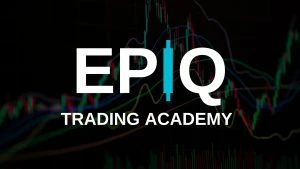When you hear people say “DYOR”, Do Your Own Research, what they really mean is: learn how to read and understand a whitepaper.
A project’s whitepaper is its blueprint. It tells you what the team is building, how it works, and why it exists. Unfortunately, many beginners skip this step, relying on hype or social media opinions instead of facts.
In this guide, we’ll walk you through exactly how to read a crypto whitepaper like an analyst, not a speculator. You’ll learn what to look for, what to avoid, and how to spot red flags before investing a single dollar.
🧠 What Is a Whitepaper?
A whitepaper is the official document that explains a crypto project’s purpose, design, technology, and tokenomics. Think of it as a combination of a business plan and a technical manual.
Good whitepapers are detailed, transparent, and logical. Bad ones are vague, overly technical without clarity, or filled with marketing buzzwords.
Your job as an investor or trader is to filter one from the other.
📖 Step 1: Read the Executive Summary First
Most whitepapers start with a summary or abstract that explains the core idea in one or two paragraphs.
Ask yourself:
- Can I understand what this project actually does after reading this section?
- Does it solve a real problem in crypto, or is it reinventing the wheel?
- Does it sound like a legitimate use case, or just another way to sell a token?
If the summary leaves you confused or full of promises but no clarity — proceed cautiously.
⚙️ Step 2: Identify the Problem and the Solution
Every good project starts by defining a problem that needs solving. Then it introduces a solution (its product or blockchain).
Example
Problem: Traditional finance is slow, centralized, and expensive.
Solution: A decentralized, automated platform using smart contracts to enable fast, low-cost transactions.
Evaluate whether the problem is real and the proposed solution is practical. If the “problem” sounds exaggerated or the solution unrealistic, it might just be a hype narrative.
💻 Step 3: Understand the Technology
You don’t need to be a developer to grasp the basics of what’s under the hood. Focus on the following:
- Blockchain Type: Is it Layer 1 (its own chain) or Layer 2 (built on Ethereum, Solana, etc.)?
- Consensus Mechanism: How are transactions verified (Proof-of-Stake, Proof-of-Work, etc.)?
- Scalability: How many transactions per second (TPS) can it handle, and how does it compare to others?
- Security and Decentralization: What methods ensure the network can’t be easily attacked or controlled?
If the technology is described vaguely — or feels like “AI + Blockchain + Metaverse + NFTs” without structure — that’s often a red flag.
💰 Step 4: Examine the Tokenomics
Tokenomics (token economics) explain how the project’s cryptocurrency works and what gives it value.
Here’s what you should focus on:
- Total Supply: How many tokens exist in total?
- Circulating Supply: How many are currently on the market?
- Distribution: How are tokens allocated between the team, investors, and public?
- Utility: What does the token actually do — governance, payments, staking, access to the ecosystem?
- Inflation & Vesting: Are tokens being released gradually, or will a large unlock flood the market soon?
If a project gives 50%+ of its tokens to the team or early investors, that’s a serious warning sign.
🧩 Step 5: Look at the Roadmap
A good roadmap outlines the timeline and milestones for development.
Look for:
- Clear dates or quarters (Q1 2025, Q2 2026, etc.)
- Realistic goals (product launches, audits, partnerships)
- Previous milestone completion
If the roadmap only promises “world-changing features” without deliverables, it’s marketing fluff, not strategy.
👥 Step 6: Research the Team and Partnerships
Even great ideas fail under bad management.
- Team: Check if the founders and developers are publicly known and verifiable. Are they active on LinkedIn, GitHub, or other industry platforms?
- Advisors and Backers: Who’s supporting the project? Real partnerships or just logos for show?
- Past Projects: Have they built or delivered anything before?
Anonymous teams aren’t always bad (Bitcoin was created anonymously), but if it’s anonymous and the tokenomics look questionable — it’s best to avoid.
📊 Step 7: Check Community and Transparency
Crypto thrives on community. Look at engagement across Discord, Twitter (X), and Telegram — but be careful. Paid hype can look like real excitement.
Ask yourself:
- Is the community active and asking real questions?
- Does the team provide frequent, detailed updates?
- Are there clear communications about token releases and governance?
Strong communication equals strong trust.
🚩 Step 8: Identify Red Flags
Red flags usually appear once you know what to look for. Watch out for:
- Unrealistic promises like “guaranteed returns” or “risk-free income.”
- Overcomplicated technical language that hides a lack of real detail.
- Tokenomics that heavily reward insiders.
- No public audit or code transparency.
- Generic partnerships with no proof.
When in doubt, remember: if it sounds too good to be true, it usually is.
🔍 Step 9: Compare With Competitors
Every sector (DeFi, AI, gaming, infrastructure) already has leading projects.
Ask:
- What makes this one different or better?
- Does it have a genuine competitive advantage, or just a new name and logo?
- Is it solving a unique niche problem or copying an existing idea?
This step helps you filter the innovators from the imitators.
🧠 Step 10: Form Your Own Conclusion
Once you’ve gone through these sections, summarize your thoughts:
- Do you understand the project clearly?
- Does it solve a real problem?
- Is the team capable and transparent?
- Is the tokenomics fair and sustainable?
If most answers are “yes,” the project deserves a spot on your watchlist. If not, move on — the market has endless opportunities.
🎯 Final Thoughts
Reading a whitepaper is like due diligence before investing in a company. The more you practice, the faster you’ll spot quality.
The projects that stand the test of time aren’t the flashiest — they’re the ones with clarity, structure, and transparency.
Don’t rely on influencers or Telegram groups. Learn to trust your own analysis. That’s how traders evolve into professionals.
Trade Smarter With EPIQ
At EPIQ Trading Floor, we teach traders how to analyze projects like pros.
Inside, you’ll get:
✅ Step-by-step breakdowns of real whitepapers
✅ Tokenomics analysis tools and comparison dashboards
✅ Beginner and advanced courses inside the EPIQ Academy
✅ Access to our trader community that reviews projects daily
Start your 3-day free trial today and learn how to identify real value — not hype — in the crypto market.
Not Financial Advice (NFA): This article is for educational purposes only and not financial advice. Always do your own research and manage your risk responsibly.










Responses